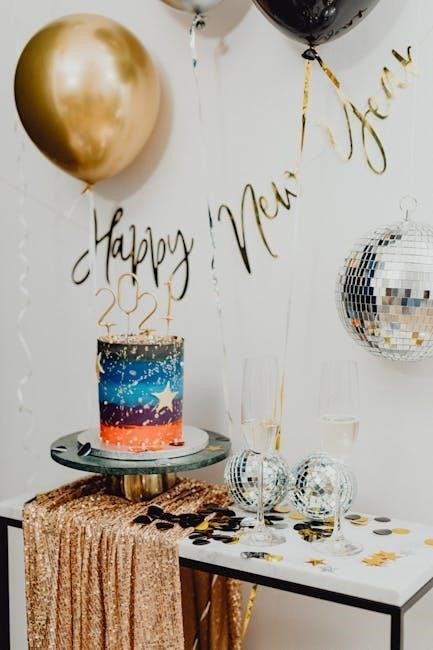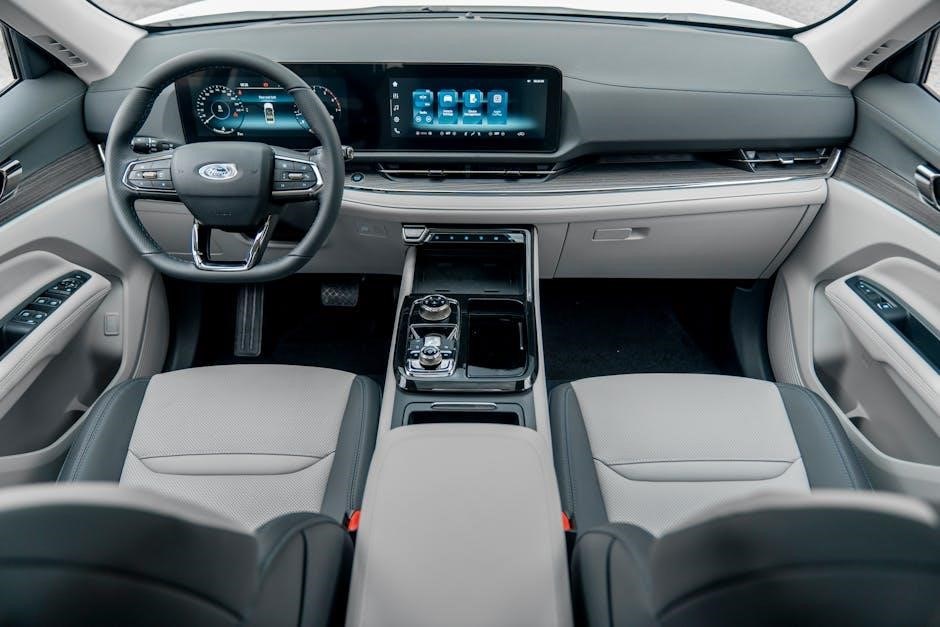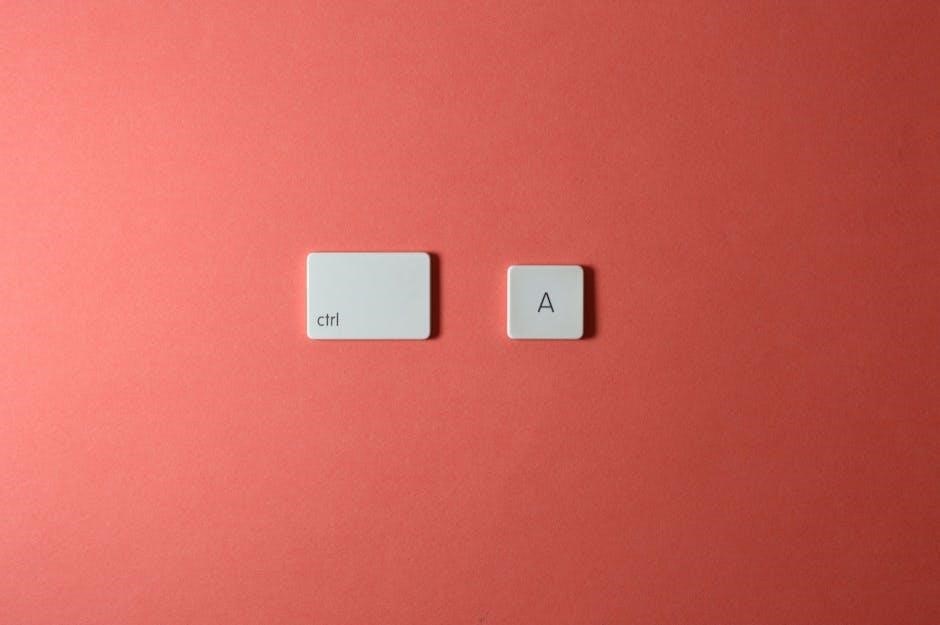AS 3740:2021 Waterproofing Standard Overview
AS 3740:2021 outlines the minimum requirements for waterproofing materials‚ design‚ and installation in domestic wet areas within Class 1‚ 2‚ and 4 buildings‚ as defined by the National Construction Code (NCC). It extends application to Class 3-9 buildings‚ treating wet areas as if they were Class 2 or 4 structures.
Scope of AS 3740:2021
The AS 3740:2021 Waterproofing Standard meticulously defines the criteria for waterproofing domestic wet areas. Its scope encompasses Class 1‚ Class 2‚ and Class 4 buildings as outlined in the National Construction Code (NCC). This standard extends its reach to wet areas within Class 3 to 9 buildings‚ effectively treating them as if they were part of a Class 2 or 4 structure‚ ensuring uniform waterproofing practices.
The standard’s objective is to establish clear guidelines for the design‚ materials‚ and installation processes involved in waterproofing. It aims to mitigate water damage and maintain structural integrity in areas prone to moisture. AS 3740:2021 provides comprehensive requirements for waterproofing materials‚ ensuring their suitability for specific applications and environments. The standard also addresses design considerations‚ including drainage‚ fall‚ and detailing‚ to prevent water ponding and leakage.
Moreover‚ AS 3740:2021 specifies installation procedures‚ emphasizing proper techniques and workmanship to achieve effective and durable waterproofing. By adhering to these guidelines‚ builders‚ contractors‚ and designers can ensure compliance with the NCC and minimize the risk of costly rectification work due to water damage. Its application ensures uniformity in waterproofing practices across various building classifications.
Application to Different Building Classes
AS 3740:2021’s application varies based on building classification as defined by the National Construction Code (NCC). For Class 1 buildings (houses)‚ Class 2 buildings (apartments)‚ and Class 4 buildings (caretaker’s residences)‚ the standard provides specific requirements for waterproofing wet areas like bathrooms‚ laundries‚ and kitchens. These requirements ensure that waterproofing is adequate for residential settings‚ preventing water damage and maintaining structural integrity.
The standard also extends its application to Class 3 to 9 buildings‚ which encompass a range of commercial‚ industrial‚ and public structures. In these cases‚ AS 3740:2021 treats the wet areas as if they were part of a Class 2 or 4 building‚ meaning that the residential waterproofing standards apply. This ensures that even in non-residential buildings‚ wet areas receive adequate waterproofing to prevent water damage and maintain hygiene.
This approach ensures a baseline level of protection across different building types. However‚ it’s essential to note that specific project requirements and local regulations may necessitate additional waterproofing measures beyond AS 3740:2021. Consulting with qualified building professionals and referencing the NCC is crucial for determining the appropriate waterproofing solutions for each building class and specific application.
Key Requirements of AS 3740:2021
AS 3740:2021 details essential requirements for waterproofing domestic wet areas. Key aspects include material specifications‚ design considerations for effective water management‚ and precise installation procedures to ensure long-term protection against water damage‚ adhering to NCC guidelines for Classes 1‚ 2‚ and 4 buildings.
Waterproofing Materials
AS 3740:2021 specifies the minimum requirements for waterproofing materials used in domestic wet areas‚ ensuring durability and effectiveness. The standard emphasizes compliance with specific performance criteria to prevent water penetration and subsequent damage. Materials must be suitable for the intended application and compatible with other building components.
The standard addresses various types of waterproofing membranes‚ including liquid-applied membranes and sheet membranes‚ detailing their properties and appropriate uses. It also covers sealants and accessories essential for creating a complete waterproofing system. The selection of materials must consider factors such as substrate type‚ expected moisture exposure‚ and potential chemical exposure.
AS 3740:2021 mandates that waterproofing materials meet relevant Australian Standards or equivalent international standards. It outlines testing requirements to verify material performance‚ including water resistance‚ adhesion‚ and flexibility. The standard also addresses the importance of proper storage and handling of waterproofing materials to maintain their integrity before installation.
Furthermore‚ AS 3740:2021 provides guidance on selecting materials that are resistant to mold and mildew growth‚ contributing to a healthier indoor environment. The standard highlights the significance of using materials with low volatile organic compound (VOC) emissions to minimize potential health risks. The materials need to be appropriately graded.
Design Considerations for Wet Areas
AS 3740:2021 emphasizes several critical design considerations for waterproofing wet areas in residential buildings. Proper design is crucial to ensure the long-term effectiveness of the waterproofing system and prevent water damage. The standard highlights the importance of assessing the degree of risk associated with water exposure in different areas‚ influencing material selection and detailing.
The design must account for potential movement in the building structure‚ incorporating expansion joints and flexible sealants to accommodate movement without compromising the waterproofing membrane. Adequate falls and drainage are essential to direct water towards floor wastes and prevent ponding. The placement and type of floor wastes must comply with AS 3740:2021 requirements.
AS 3740:2021 also addresses the design of junctions between different building elements‚ such as walls‚ floors‚ and penetrations. These junctions are critical points for water ingress and require careful detailing to ensure a watertight seal. The standard provides guidance on selecting appropriate junction types and sealing methods.
Furthermore‚ the design should consider the compatibility of different materials used in the wet area‚ including the substrate‚ waterproofing membrane‚ and tiling system. Incompatible materials can lead to adhesion failures and compromise the waterproofing system. AS 3740:2021 recommends consulting with material manufacturers to ensure compatibility and adherence to industry best practices.
Installation Requirements
AS 3740:2021 places significant emphasis on proper installation techniques to ensure the effectiveness of waterproofing systems in wet areas. The standard mandates that waterproofing be installed by qualified and experienced personnel‚ adhering strictly to the manufacturer’s instructions and relevant Australian Standards.
Surface preparation is crucial. Substrates must be clean‚ dry‚ and free from contaminants that could impede adhesion. Any cracks or imperfections should be repaired before applying the waterproofing membrane. The standard specifies requirements for substrate priming to enhance adhesion and prevent moisture migration.
Membrane application must be consistent and uniform‚ with the correct thickness and overlap as specified by the manufacturer. Detailing around penetrations‚ corners‚ and junctions requires special attention to ensure a watertight seal. AS 3740:2021 provides specific guidance on sealing these areas‚ emphasizing the use of compatible sealants and reinforcing materials.
The standard also addresses the importance of curing the waterproofing membrane properly. Adequate curing time is essential for the membrane to achieve its full strength and elasticity. Environmental conditions‚ such as temperature and humidity‚ can affect curing time‚ and AS 3740:2021 provides recommendations for different conditions.
Post-installation inspection and testing are vital to verify the integrity of the waterproofing system. AS 3740:2021 recommends conducting a water test to identify any leaks or defects before tiling or other finishes are applied. Any issues must be rectified before proceeding with subsequent construction stages.
Specific Areas Addressed in AS 3740:2021
AS 3740:2021 details specific waterproofing requirements for critical wet areas. These include showers‚ floors‚ and walls. It provides guidelines for material selection‚ design considerations‚ and installation techniques to prevent water damage and ensure structural integrity in these zones.
Shower Area Waterproofing
AS 3740:2021 places significant emphasis on shower area waterproofing due to the high risk of water damage. The standard mandates waterproofing the entire water-resistant wall lining in a shower area to a minimum height of 1800mm above the finished floor level.
A key requirement involves introducing a vertical water stop where the shower is located within 200mm of a wet area exit. This measure prevents water from escaping the shower area and causing damage to adjacent structures.
The standard also addresses membrane grading to the drain waste puddle flange‚ which is crucial for effective water drainage. While grading the membrane may be avoided in some housing situations under NCC Part 10.2‚ it is generally required‚ especially in commercial settings.
Proper sealing of penetrations‚ such as those for showerheads and taps‚ is emphasized to prevent leaks. The standard also requires no gaps or discontinuities around the floor waste outlet to ensure effective water removal.
AS 3740:2021 offers guidance on selecting appropriate waterproofing materials and systems for shower areas‚ considering factors such as water exposure and substrate compatibility‚ ensuring that the chosen system meets the performance requirements outlined in the standard.
Floor Waste and Drainage
AS 3740:2021 dedicates specific attention to floor waste and drainage systems within wet areas‚ recognizing their critical role in preventing water accumulation and potential damage. The standard mandates that floor wastes must be provided in accordance with specific clauses‚ ensuring efficient water removal.
The standard emphasizes the correct placement and installation of puddle flanges in conjunction with the floor waste to create a watertight seal with the waterproofing membrane. This ensures that any water penetrating the surface finishes is effectively directed into the drainage system.
AS 3740:2021 requires that the waterproofing membrane is properly sealed around the floor waste outlet‚ preventing water from seeping through any gaps or discontinuities. This ensures the integrity of the waterproofing system and prevents water damage to surrounding structures.
The standard also highlights the importance of grading the substrate and the waterproofing membrane towards the floor waste to facilitate efficient drainage. Proper grading ensures that water flows towards the drain‚ preventing ponding and minimizing the risk of water damage.
Furthermore‚ AS 3740:2021 outlines requirements for the size and capacity of floor wastes to accommodate the expected water flow in different wet area applications. This ensures that the drainage system is adequate to handle the volume of water generated during normal use.
Wall Waterproofing Requirements
AS 3740:2021 places significant emphasis on wall waterproofing in wet areas to prevent water penetration and subsequent structural damage. The standard mandates specific requirements for wall waterproofing based on the location and potential exposure to water.
The standard generally requires waterproofing of walls in shower areas up to a minimum height of 1800mm above the finished floor level. This ensures that the area most susceptible to water splash and spray is adequately protected. In some instances‚ the standard may require full wall waterproofing depending on the design and risk assessment.
AS 3740:2021 provides guidelines on the selection of appropriate waterproofing membranes for wall applications‚ considering factors such as adhesion‚ flexibility‚ and resistance to water and chemicals. The chosen membrane must be compatible with the substrate and the intended use of the wet area.
The standard emphasizes the importance of proper surface preparation before applying the waterproofing membrane. This includes ensuring that the wall surface is clean‚ dry‚ and free from any contaminants that may affect the adhesion of the membrane.
Additionally‚ AS 3740:2021 addresses the waterproofing of wall penetrations‚ such as pipes and fixtures‚ to prevent water ingress through these vulnerable points. It requires that all penetrations be sealed with compatible materials to maintain the integrity of the waterproofing system.
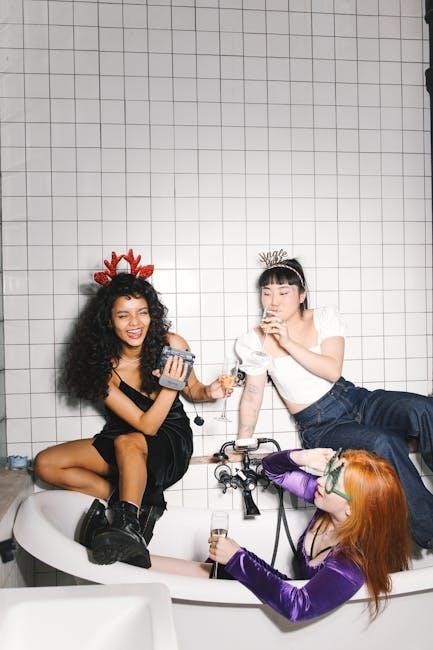
Changes and Updates in AS 3740:2021 Compared to Previous Versions
AS 3740:2021 introduces several key changes and updates compared to its previous versions‚ reflecting advancements in waterproofing technology and industry best practices. These revisions aim to enhance the effectiveness and durability of waterproofing systems in domestic wet areas.
One significant update is the enhanced focus on shower area waterproofing‚ with stricter requirements for wall waterproofing heights and the implementation of vertical water stops near wet area exits. These measures minimize water escape and prevent damage to adjacent structures.
The updated standard provides clearer guidance on the selection and application of waterproofing membranes‚ emphasizing compatibility with substrates and resistance to various environmental factors. It also incorporates updated testing methods and performance criteria for waterproofing materials.
AS 3740:2021 includes more detailed design considerations for wet areas‚ addressing factors such as drainage‚ ventilation‚ and the integration of waterproofing with other building elements. These considerations promote a holistic approach to wet area design‚ ensuring long-term performance and durability.
The revised standard also clarifies requirements for the waterproofing of penetrations‚ such as pipes and fixtures‚ with specific guidance on sealing methods and materials. This ensures that these vulnerable points are adequately protected against water ingress.
Overall‚ AS 3740:2021 represents a comprehensive update to the previous versions‚ incorporating advancements in technology‚ materials‚ and design practices to improve the performance and longevity of waterproofing systems in domestic wet areas.

Compliance with AS 3740:2021 and the National Construction Code (NCC)
Compliance with AS 3740:2021 is crucial for ensuring that waterproofing systems in domestic wet areas meet the minimum requirements set forth by the National Construction Code (NCC); The NCC references AS 3740:2021 as a deemed-to-satisfy solution for waterproofing‚ meaning that adherence to the standard demonstrates compliance with the NCC’s performance requirements.
Building professionals‚ including designers‚ builders‚ and installers‚ must be familiar with the provisions of both AS 3740:2021 and the NCC to ensure that waterproofing systems are designed and installed correctly. Failure to comply with these standards can result in non-compliance with building regulations‚ leading to costly rectification work and potential legal issues.
The NCC specifies the areas within a building that require waterproofing‚ while AS 3740:2021 provides the technical details for achieving effective waterproofing in those areas. The standard outlines the materials‚ design considerations‚ and installation methods necessary to prevent water damage and maintain the structural integrity of the building.
Regular inspections and certifications are essential for verifying compliance with AS 3740:2021 and the NCC. These assessments ensure that waterproofing systems are installed according to the standard and that they meet the required performance criteria.
By adhering to AS 3740:2021 and the NCC‚ building professionals can demonstrate their commitment to quality and safety‚ providing homeowners with peace of mind and protecting their investment from the risks associated with water damage.
